A Calendar Bias for Biblical Time
(2009, Revised 2015, 2022) By: Shawn Richardson
|
GO TO SECTION: Index | 1 | 2 | 3 | 4 | 5 | 6 | 7 | 8 | 9 | 10 | 11 | 12 | 13 | 14 | 15 | 16 CURRENT HEBREW CALENDAR |
Now Available!You are currently reading an earlier version of this research paper. Please consider purchasing the latest version in paperback or Kindle format below. Proceeds help support RenewedMoon.com, a website fostering communication among the body of believers by inviting community participation in submitting sightings and sharing updates from global and Israel-based perspectives. Through these efforts, the site promotes education on the observational calendar.: |
Section 9:CURRENT HEBREW CALENDARWe have already seen an evolution of this calendar from a Biblical perspective that is based on directly observing the lunar, solar, and seasonal signs, to a process of observation that was confirmed by witnesses using calculation to confirm their testimony, and finally to a process of relying on purely calculated timetables, completely abandoning observational practices - except for observing the Biblical Day. The average Molad has replaced gazing to the night sky for a new moon crescent. The 19-year intercalary cycle has replaced the annual search for matured, indigenous barley in the spring. Many that support the Hebrew calendar either blindly accept these changes, or falsely claim it has been divinely proclaimed by God Himself and kept secret for four thousand years and preserved by the Jews. This is despite Jews contradicting such claims. Modern astronomical understanding proves that this calendar has only been in existence in its current form no earlier than the 9th century C.E. Yet, there are even more concerns we need to consider. Names of Months
One of the changes that took place is preserved by the scriptures themselves. That is a change of the proper Hebrew names given for months. As we read in Exodus, Yehovah gave us a "name" for the first month of the year, for lack of a better term, as being the month of the Aviv. The reference to Aviv can be seen in Exodus 12:2, 13:4, 23:15, 34:18 and Deuteronomy 16:1. The current Hebrew calendar, however, has given the first month the proper name Nisan - although minor on the surface, a change indeed. There are three other months with similar references in the early Old Testament Bible: Ziv (I Kings 6:1 and 6:37), the second month meaning light (splendor or radiance), Ethanim (I Kings 8:2), the seventh month meaning strong (ever flowing), and Bul (I Kings 6:38) the eighth month meaning produce (or rain) when crops were often planted. The remaining months were simply numbered (third month, fourth month, etc.) - in fact, all the months were simply numbered just as the days of the week are numbered. There was no need to properly name them. But in later writings of the Old Testament (Nehemiah and Esther), and then after the New Testament era, we see a change to references of the calendar as having all the months named whose origins come from ancient Babylonia (Nisan, Iyyar, Sivan, Tammuz, Av, Elul, Tishri, Kheshvan, Kislev, Tevet, Shevat, Adar and Adar II). We can confirm this in the Wikipedia Encyclopedia [20]: "During the Babylonian exile, which started in 586 BCE, Jews adopted Babylonian names for the months, which are still in use. The Babylonian calendar also used a lunisolar calendar, derived from the Sumerian calendar, which was similar in structure to the Hebrew one." The Bible itself (in only two books of the Old Testament) verifies a change to referencing the Babylonian and Sumerian calendars around 586 B.C.E., or at least references the names of months (and not necessarily accepted for common use). However, it was also a calendar based on observation of the new moon crescent[20]. However, it's not a change dictated by Yehovah within scripture. Just because this change is recorded within the Biblical text, however, it does not mean that it should have! These names have replaced the original Hebrew, including the name Aviv, no longer providing a foundation for basing our first month on the moon of the ripened barley harvest. Furthermore, if the existing calendar was considered preserved as part of the Oracles, wouldn't the names have been preserved as well? Did Yehovah approve of such a name change - even when He directly gave the original reference for the first month of the year? Just as we no longer refer to days of the week as the first day, second day, etc., today's society has also adopted the names of Sunday, Monday, etc. In fact, all the names for the days of the week are now based on the names of Pagan gods - including the Babylonian Sun god (Sun-day). But just because we may reference the Sabbath today as being on Saturdays, does that mean Yehovah intended to change his Sabbath to be called Saturday? No, of course not! Neither should we assume Yehovah changed the month of Aviv to Nisan! So what harm is there in giving names to the Biblical Months? Notice the Babylonian name given to the fourth month. Tammuz, which was one of the primary Babylonian gods that has evolved into many pagan practices intricately tied into the summer and winter solstices each year - including the celebration of Christmas. Tammuz is a Life-Death-Rebirth Deity[42] that is mourned at the summer solstice as he begins to die and celebrated at the winter solstice as he is reborn. Tammuz is also mentioned in the Bible with the mourning ceremony for the Pagan god specifically classified as an abomination by Yehovah. Ezekiel 8:14-15[1]: "Then he brought me to the door of the gate of the LORD'S house which was toward the north; and, behold, there sat women weeping for Tammuz. Then said he unto me, Hast thou seen this, O son of man? turn thee yet again, and thou shalt see greater abominations than these." {Underlined emphasis added} Even Yeshua Himself never references the Babylonian names for the months within the scriptures. Certainly Israel, followed by the Jewish community and its authoritative leaders, picked up some Pagan practices after their Babylonian exile just as we continue to do today (beyond naming the days of the week). But regardless, even though He may have allowed it to happen, there are no scriptures showing the Babylonian names of the months as being ordained by Yehovah. And, again, it certainly does not support a calendar system being preserved and protected in the Oracles from the time of Moses. 19-Year Intercalary Cycle
Much like how we reference the Gregorian calendar today, the people of Jerusalem would have been subjugated to use the promoted Babylonian civil calendar after their conquest in 587 B.C. and could explain these uncommon references to months within the Old Testament. Similarly, in a period under Alexander the Great from 332-200 B.C., the Macedonian calendar would have been heavily promoted for civil use on the people. Finally, in the first century A.D., Roman occupation would have been heavily used, yet there is no evidence that any of these civil calendars replaced that of an observational method for denoting religious practices. The Britannica explains: [74]
As we read in the previous section, Hillel II, a Palestinian patriarch, was attributed to introducing the 19-year Intercalary Cycle in the 4th century. While some believe he introduced all the calculations for the Hebrew calendar, we saw disputes continued over the calendar as late as the 9th century. The Hebrew calendar's own accumulated variance between today's calculations of the lunar cycle and the Molad calculation prove that today's calendar was not instituted until at earliest the 9th century. And it wasn't until the 12th century we find that Rabbi Maimonides, the great medieval philosopher, and legist, wrote Sanctification of the New Moon, first evidence of the modern calendar being widely instituted by the Jewish community. While Hillel's 19-year cycle follows very closely to the actual pattern of aviv barley found within Israel today, it was likely established based on historical, repeated findings of barley within the land. It may have even been a mathematical tool used by the Palestinians prior to Hillel that, no doubt, became more and more accurate over time. The cycle consists of a pattern, spanning over 19 years, where a leap year occurs (or when a 13th month is inserted) – known as Shanah Me'uberet (meaning a pregnant year) - which occurs every 3rd, 6th, 8th, 11th, 14th, 17th, and 19th year. The Molad Emtzai
To calculate today's Hebrew calendar, you must first begin with the calculated Molad (or the Molad Emtzai). The word Molad is a Hebrew word meaning birth that is connected to the time at which the New Moon is supposedly "born". However, this is somewhat ambiguous because it can differ based on the context. It can mean the astronomical lunar conjunction in a particular location, or some use it to specify the first visibility of the new lunar crescent after conjunction. For the Hebrew calendar, it is essentially the mean lunar conjunction (a fixed length of time that represents the average timespan from one conjunction to another that varies from month to month). This average timespan of the moon, essentially the Synodic month, occurs exactly 29 days 12 hours 44 minutes and 3 1/3 seconds (or, equivalently, 29.53059 days) after the previously calculated Molad moment. For example, the Molad Emtzai in 2016 (Year 5777 of the Hebrew calendar) occurred on Saturday, October 1st at 2:40pm Israel Mean time (14:40 military time). The moon's conjunction occurred within Jerusalem at 2:32am (02:32 military time). This, of course, assumes the Molad calculation originated with a meridian running through Jerusalem (which is located 35 degrees east of Greenwich). Therefore, we adjust the Greenwich Mean Time (GMT) of the calculated conjunction by adding 2 hours and 21 minutes to arrive at the time of conjunction over Jerusalem (or Jerusalem Mean Time - JMT). This adjustment is made because the exact moment of conjunction does not occur to everyone on the globe at once. A good example of this is when a solar eclipse occurs (which is the moment of conjunction), a visible shadow is cast upon the earth's surface and slowly progresses in a straight path for several hours. Not everyone on the surface within the shadow's path sees a total eclipse of the sun at the exact same moment on the same day. Therefore, the adjustment is made to when the moon would be closest to conjunction directly over Jerusalem. Calculating this time gives us a total variance of 12 hours and 8 minutes between the Molad result and the astronomical new moon conjunction that occurred on October 1st, 2016, in Jerusalem. You can see in Figure 1 that the Hebrew year 5777 was the first year of the 19-year Intercalary Cycle and, therefore, was 12 months in length. To determine the year 5778, you would multiply 29.53059 days by 12 and you wind up on Wednesday, September 20, 2017, at 11:28pm (23:28). Figure 1 shows that this was 15 hours and 38 minutes after the astronomical new moon conjunction occurred. You may notice that this variance between the Molad Emtzai and the conjunction spans over a period of 38 years with variances anywhere from 15 hours and 46 minutes in 2035 to just 53 minutes in 2058. Later we will see that additional rules expand this variance even further. Yet, even just considering the definition of the Biblical term chodesh as somehow being defined as an average mathematical cycle, like the Molad, how can one accept a majority of a day's variance from year to year, much less month to month? From here, you would probably expect that the Hebrew calendar would refer to this Molad timeframe every month, but no. Instead, it uses a fixed number of days - with a few exceptions. Much like how we are used to the month of February being either 28 or 29 days based on leap years, occurring approximately every four years, the Hebrew calendar also has two months that fluctuate in length based on certain rules (which we will cover shortly). All the months, however, are assigned a fixed length of either 29 or 30 days. Only the seventh month is calibrated, so to speak, to this Molad. The remaining months are assigned a fixed number of days that never change, regardless of the moon's actual cycle. The 1st, 3rd, 5th, 7th, and 11th months are each assigned 30 days. The 2nd, 4th, 6th, and 10th months are assigned 29 days. In a standard year of 12 months, the 12th month is 29 days in length. In an intercalary leap-year containing 13 months, the 12th month is pushed to now be the 13th month with new 30-day "leap month" being inserted, now becoming the new 12th month. Figure 2 below shows, month by month, the first three years of the Hebrew calendar from our first example. This table demonstrates how the fixed number of months within the Hebrew calendar layout, except for the eighth and ninth months that are either 29 or 30 days based on the calendar's rules, along with the insertion of a 30-day leap-month for the intercalary year. While the intercalary year can appropriately be considered a leap-month, the additional arbitrary rules can delay a date from the calculated Molad either a full 24 or 48 hours. Again, dates have been highlighted in Figure 2 to show how often these delays occur from the actual lunar cycle from conjunction to conjunction. Of the 37 months listed, only 11 of those months have all three events occurring on the same date (or 29.7% of the time). This demonstrates the overall disconnect the calculated Hebrew calendar has with the moon, even though most consider or believe it to be directly lunar based. There are times, although rare, when the Molad can even fall on the day prior to the conjunction. That's gives a total variation of up to four calendar days the calculations differ from the actual conjunction event. Figure 2 shows months 4 and 6 of Hebrew Year 5776 (July & September of 2016) starting 3 days later than the day of conjunction. The month that starts closest to the conjunction is month 11 of Hebrew Year 5778 (January 2018). Rules of PostponementAt this point, the best we can say is that the Hebrew calendar is 'loosely' based on the lunar cycle - albeit in an inconsistent manner - when it is based on the Molad once per year. But now let's look at the rules that cause us to add days to either the 8th and/or 9th months. These rules are often referred to as the rules of postponement, or Dechiyot. Many perceive these as being from a mathematical perspective, assuming them to be innocent leap days being added to keep the seventh month aligned with the Molad. However, that is simply not the case. Rather, these "leap days" are no different than utilizing Daylight Savings Time within our clock bias analogy (explained within the introduction of this paper) that adds an extra hour to the clock to force the day to end earlier. These extra one or two whole days are also added to the prior year to delay the start of the seventh month, or Rosh Hashanah/Yom Teruah (Day of Trumpets) based on certain conditions. From a lunar cycle perspective, these rules add an even greater variance from the conjunction and, in effect, cause this calendar system to become completely disconnected from the moon entirely. To the Jewish community, they refer to this as "Fixing Rosh Hashanah," they describe this, according to the Encyclopedia of Judaism[37], as the...
Notice that this is described in the Mishnah, which was codified in the year 1180 A.D. It's also worth noting that the seventh month of the Hebrew calendar is referred to in the Jewish community as the New Year. This can be confusing when most of us think of the New Year as being the first month. Although Jews still consider it Tishri, the seventh month on the calculated calendar, they also consider it to be the first month of a "fiscal" year. Traditionally, they claim that the seventh month marks the anniversary of the Creation Week given in Genesis. Let's look at each one.
Rule OneThe first rule that 'fixes' the calendar delays the start of the 7th month (or the Day of Trumpets) based on what time of the day the calculated Molad cycle falls. From a Biblical perspective, you might think that this cutoff occurs around sundown. Instead, the rule delays to the next day whenever the Molad falls on or after the noon hour in Jerusalem. When this rule is active, the previous year's 8th month will be increased to 30 days in length, thereby pushing the Day of Trumpets forward one day (along with the start of all the prior months throughout the year) from the moment of the Molad. The noon hour is determined by a global meridian extending through Jerusalem, not unlike the International Dateline in the Pacific Ocean that determines the Day of the Week at the midnight hour. So why was the noon hour chosen? Even though the Molad is, essentially, the moon's conjunction, some church groups seem to interpret this rule as actually taking the new moon crescent into account. For example, the United Church of God, in regard to this first postponement rule, has stated in their doctrinal paper of The Hebrew Calendar[19]:
In other words, the day that is established as being the first of the month, based on the noon cut-off, would be considered a guarantee that the moon's crescent would also be seen on that day somewhere on the Earth by the time the next sunset comes around in Jerusalem. This is contrary to the fact that there is already over 20-hours of variance between the conjunction and the Molad, as we have seen already before this rule is even applied. Even the use of pure observation, restricted to within Jerusalem, has less variance than this - and we're just on rule one. Even if the Biblical definition of chodesh were accepted as the calculated Molad, would an average six hours prior to sunset be the most appropriate choice? The average lapsed time for the new moon crescent to appear from the moon's conjunction is 18 hours. According to the NASA/Naval Observatory's recorded history of the new moon crescent for the Islamic calendar - a calendar also based on observation - they state in Crescent Moon Visibility and the Islamic Calendar[8]:
This means the minimum number of hours, even by using a telescope, is just over twelve hours - not six. A visible crescent is generally 16-18 hours later. Remember, this is not taking into consideration the already 20-hour variance between the Moland and the conjunction. This makes a total variance of up to 38 hours between the Molad calculation and the visible crescent. Regardless of the arbitrary six-hour rule, it's obvious this rule is not taking the visible crescent into consideration - but rather it is simply a man-made fixed point established to create a mathematical deadline. Further, if the crescent was really considered the important factor for establishing the 7th month, as this group claims, the calculations would be based on the average time the sighting of the crescent itself occurred instead of finding the conjunction that happens several hours earlier and then re-adjusting back to the noon hour to undo what you just computed. Additionally, if the crescent is what is truly important, then why not use it instead? And then, why not apply your rule to every month of the year, and not just the seventh? Since the leap day that is inserted for this rule is added to the prior year's 8th month, it then destroys the integrity of the prior 10-11 months that were already established. Regardless of the arguments for or against this first rule, certainly we've hashed this over enough to finally determine a mathematical start to the month, but no. Now we will look at the next rule that can delay the month by yet another whole day. Rule Two The second Rule of Postponement creates an entirely fictional decree to avoid certain Festival dates from occurring adjacent to the weekly Sabbath. Therefore, if the first day (after applying any possible delay with the first rule) falls on the first, fourth or sixth day of the week, the 7th month is postponed, yet again, to the following day by adding another leap day to the previous year's 9th month, changing it from 29 to 30 days. Confirmed by the Wikipedia Encyclopedia [20], this postponement rule is:
This rule certainly does not take the visible crescent into account no matter how you attempt to twist the rules, nor is there any mathematical necessity - this is strictly a man-made requirement. There is no Biblical support to this rule, and even the Orthodox Jews or the Rabbinical authorities claim that there is no such requirement given within scripture. Historically, you will find references to Rabbinical Jews instituting this rule to avoid the bad smells that would occur because if one died on the Sabbath, they could not be buried for up to two days. But, the United Church of God accepts this adjustment, by claiming in their doctrinal paper The Hebrew Calendar[19], that:
Therefore, United Church of God believes that Yehovah did not intend on His people to experience the hardship of having two Sabbath days in a row; although this scenario always occurs in the spring season - in fact, it's even forced - as the Day of Pentecost falls on the first day of the week! It assumes that back-to-back Sabbaths are a burden (or are too difficult to bear) and that Yehovah never intended this scenario to occur too often, yet fails to mention it anywhere in scripture. Seems like a rather important error of omission, doesn't it? Mr. John Ogwyn of the Living Church of God defends this postponement rule by citing the Day of Preparation. He states in his article [18]:
Mr. Ogwyn assumes here that the Day of Preparation must occur on the previous day and that we cannot prepare for more than one Sabbath in a row should they fall back-to-back. By referring to shabbat shabbaton, he is saying that this sanctified holy day, like the weekly Sabbath, is the only holy day referred to in this manner. But this still would only apply to the rule for the fourth and sixth days of the week, not the first. The Day of Trumpets is not considered a shabbat shabbaton. This just seems like an arbitrary excuse. Given that this scenario occurs for three of the seven possible days of the week, surely this scenario would be covered in scripture when Israel relied on manna falling in Exodus. Yet scripture is silent on this, seemingly common, scenario. We see in Exodus, when the miracle of manna occurred in the wilderness to feed the people during the time of Moses, that Israel was commanded to gather twice as much before the Sabbath. Exodus 16:23[1] states:
Exodus 16:26[1] says:
Exodus 16:29[1] continues:
We see here that the important focus is the Sabbath itself, not the sixth day of the week. There is no reason to limit Yehovah by stating he would not have made enough manna available for three days instead of two if it were necessary for shabbat shabbatons. It is only when His commands were ignored, and the people gathered on the Sabbath day itself that the manna would spoil. Additionally, if the Day of Atonement were to fall on a Sunday (or a Friday, for that matter), there would be no need to gather three times the amount of manna because no food would have been consumed on the Day of Atonement - a day of fasting. This scenario would be no different than any other Preparation Day for the given week. If the Day of Atonement were to fall on a Friday, why would we assume Yehovah would not have kept the manna from spoiling during the Day of Atonement and the start of the weekly Sabbath? The purpose of the Preparation Day is to prepare for the oncoming Sabbath - it shouldn't matter whether it is for one day or two days back-to-back. There is also no requirement that the Day of Preparation must fall on a particular day of week for the annual festivals. And, in fact, we are given Biblical examples where it doesn't (i.e., John 19:31). Mr. Ronald L. Dart, a former Worldwide Church of God minister and recent radio evangelist, claimed the temple sacrifices were of a primary concern for this rule. In his article Why Do We Use the Hebrew Calendar? [43], Mr. Dart states:
In other words, Dart defends this rule by stating the Rabbinical authorities could simply change Yehovah's appointed Holy Days by working out these simple rules. This would not be unlike changing the weekly Sabbath to the first day of the week by simply changing the calendar to insert an extra day prior to the seventh day (there's no specific instructions to the contrary there either). With the special duties of the High Priest at the temple, which required specific sacrifices on Holy Days, Sabbaths, New Moons, along with daily sacrifices in the mornings and evenings, placing the Day of Atonement adjacent to the weekly Sabbath just now becomes too difficult? Again, there seems to be no problem with having the Day of Atonement fall on the exact same day as the weekly Sabbath which would increase the number of required sacrifices to be done on the same day, but two days in a row proves to be even more inconvenient? Why does the absence of instruction to not make changes assume an authority to then make such changes? This flies in the face of the commandment to not add to or subtract from the Torah (or the law) found in Deuteronomy 4:2[1]: "Ye shall not add unto the word which I command you, neither shall ye diminish ought from it, that ye may keep the commandments of the Lord your God which I command you." {Underlined emphasis added} Finally, why are any of these scenarios to be considered a conflict or an inconvenience for the Day of Atonement (a day of fasting) and not for the Day of Pentecost that would also fall back-to-back with the weekly Sabbath? Remember, there were still sacrifices still being made on the Day of Atonement, but how does the previous day or next, being the weekly Sabbath, have any impact on this situation? The Jewish festival of Hoshana Rabbah, mentioned above, is documented as being another purpose of instituting this second postponement rule. The traditions that occur on Hoshana Rabbah are some of the oldest in Orthodox Judaism. The Wikipedia Encyclopedia explains the Hoshana Rabbah [23] rituals...:
This festival, also known as a water festival, is held on every day of the Feast of Tabernacles in Jewish tradition. But there are specific rituals conducted specifically on the 7th day. The Encyclopedia of Judaism of Answers.com explains [51]:
But these traditional ceremonies are not instructed within the Bible. In fact, they are man-made traditions that have been created as a prayer for rain by walking (or even dancing) in a circle, chanting words repeatedly using the Aramaic expression "chabit, chabit velah barich". These traditions border very similarly to Pagan practices of rain god dances. In fact, the Encyclopedia of Judaism continues...
This means that Yehovah would accommodate the necessity for calendar postponements to avoid interrupting a man-made and superstitious tradition. This second rule is more commonly applied than the first. In Figure 2, you will see that it applies 50% of the time over 38 years, and it can also be combined with rule 1. Rule ThreeThe third rule applies to non-leap years that contain twelve months. For this rule, if the Molad result falls on a Tuesday (Yom 3) and if the next year's Molad, plus six hours, falls on a Sunday (Yom 1), then Rosh Hashanah is postponed to Thursday (Yom 5) - or two whole days! This is done so that the current calendar year is not too long. This is because the calculated Hebrew calendar can only last 353, 354 or 355 days in a common year. While this rule seems straight-forward mathematically, it does so at the cost of moving Holy days in relation to the moon. Rather than adjusting the arbitrary length of some other months throughout the year, this rule delays all the previous months along with the Day of Trumpets. Because of how these rules are set up, however, rule 3 would not apply at the same time as any other rule. Rule FourThe fourth rule is like rule three but applies to Intercalary years that have 13 months. If the Molad falls on a Monday (Yom 2) and the previous year's Molad fell at or after noon on Tuesday (Yom 3), then Rosh Hashanah is postponed to Tuesday (Yom 3) - or one day. Otherwise, the previous year would have been too short. The Hebrew calendar requires there to be 383, 384 or 385 days in a leap year. These requirements, when combined with the previous rule, average out to be approximately 365 days per year throughout the 19-year cycle, staying within the average solar year. Again, because of how these rules are set up, rule 4 would not apply at the same time as any other rule. This is the least frequent rule that applies, with the last time being in the Hebrew calendar year 5766 (2005/2006) and won't occur again this century. ResultsFrom a strictly mathematical perspective, some of these rules seem straight forward. After all, you want your calculated timetable to match that of the solar year. While it can be complicated to achieve a true lunar-solar calendar system that is fixed and repeatable, these rules take things much further than required. From a Biblical point-of-view, though, these extra rules simply do not exist! Essentially, these rules are an attempt to redefine the Hebrew word chodesh to include ALL these rules. When scripture defines the Day of Trumpets as taking place on the first day of the seventh month (chodesh), how can anyone pretend Yehovah meant the second or third day, and then attempt to correct the error by simply adding extra days to the previous month and ignoring the moon entirely? Figure 2 shows two full 19-year cycles from 1997 to 2034. Here we show each year where one or more Postponement rules are applied, along with the resulting dates of Rosh HaShanah (or the Day of Trumpets) - from sundown to sundown. Notice there are several dates with no highlighted colors, indicating where the Day of Trumpets is kept on the same day as the conjunction. Now, take note of the year 2035. Assuming the moon's conjunction should define the Biblical term of chodesh, then that moment falls on a Monday, October 1st at 3:27pm within Israel. This should mean, without applying any rules, that the first day of the month should be from sundown, September 30th through sundown, October 1st. But the Molad calculation for the average conjunction doesn't arrive until nearly 16 hours later. If the Molad calculation now redefines the term chodesh, then the first day of the month is now from sundown, October 1st through sundown, October 2nd. However, now the Molad calculation falls on the third day of the week, rule three now redefines chodesh even further and adds two full postponement days, because the current year is only 12 months in length. Now the first day of the month becomes sundown, October 3rd through sundown, October 4th. You can see how this now becomes a three-day variance from the astronomical new moon conjunction. This begs the question, does this process truly comply with the Biblical commandment to observe the Day of Trumpets on the first day of chodesh? No! Conclusion on PostponementsAll these adjustments, as you can see, can cause the Hebrew calendar to be off from the Biblical days we established earlier - and, as Figure 2 demonstrates, these differences occur in every single month of the year, not just at the Day of Trumpets! By abandoning the observation of His signs given in Genesis 1 to the methodology of pure calculated concepts and average timetables, there's no doubt that the Hebrew Calendar has changed the Biblical instruction. Even with many claiming observations can be messy, it still results in being more accurate to the lunar cycle than the Hebrew calendar! The only difference is, by following a calendar, everyone is equally mistaken from the moon in unison. Even if the components of this calendar were changed to be based on averages for the visual crescent, instead, mathematical averages are never exact. Then, everyone begins to rely solely on math and then, be tempted to make even more changes for the sake of convenience. But does God accept that type of change? Malachi 3:6[1] states:
There is also too much evidence that shows the Hebrew calendar, as we know it today, has been an evolving process - from a calendar based on pure observation to one based on pure calculation. This evolving change has been fully documented within Jewish history and its Rabbinical authorities - the same group that various Western church organizations attest to preserving a calendar methodology within the (unwritten) oracles. But the primary reason Orthodox Jews follow the Hebrew calendar today is strictly due to the Rabbinical authority given to it through the man-made traditions and Rabbinical writings. Glenn McWilliams, writer for Torah Keepers, a Messianic Jewish group explains in his Calendar Debate[14] article the growing Christian movement to abandon Pagan practices and return to the commonwealth of Israel. He further explains that: "These new citizens have a zeal for studying the Torah and learning the truth. Not wanting to be deceived again, these newly liberated brethren are seeking to live according to the commandments of the Almighty rather than the doctrines of men. It is not long, however, before these new citizens realize that Judaism, like Christianity, is also shaped by 'the traditions of the elders.' Thus, what is practiced in Rabbinic Judaism is not necessarily any more consistent with the Torah than what was found and rejected in Christianity." He continues to state that following the Biblical principles... "...makes sense to inspect the barley instead of religiously following the rabbis' inaccurate mathematical calculations. This is especially true when the calculations of the rabbis are clearly contradicted by the physical evidence of the barley and the new moon. We are witnessing a growing group of supporters for the ancient biblical calendar that was still in use in Israel long after the second Temple was destroyed." We are witnessing this same growing concern over the Hebrew calendar right now within many Western church organizations and Sabbath-keeping groups. They have already been a concern for much of the Jewish community and, in fact, have been a topic historically debated since shortly after the time of Yeshua! Most have chosen to put their entire confidence and faith into the Hebrew calendar for the sake of their calendrical bias and by following the example of the Orthodox Jews' blind acceptance of rabbinical arbitrary rules without any question to their validity. Some simply assume the math to be accurate to the signs or what the sages kept for so many years. Many of us in the Western World have never even considered the architecture and history behind the Hebrew calendar's evolving process. Many of us simply assume the calendar has been preserved and may not even realize that the Rabbinical Orthodox Jews themselves don't even view their own calendar in this same way. Instead, many just submit to the Rabbinical authority to accept their Oral Laws as being "the next best thing" until Messiah comes. They would rather be told what to do than directly apply the written principles recognized within Torah - the Bible! Summary of the Hebrew Calendar
| |||||||||||||||||||||||||
|
GO TO SECTION: Index | 1 | 2 | 3 | 4 | 5 | 6 | 7 | 8 | 9 | 10 | 11 | 12 | 13 | 14 | 15 | 16 |
Revised paperback and Kindle edition available on Amazon
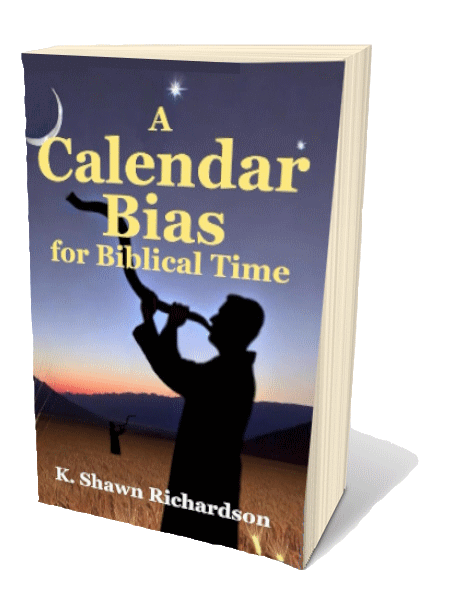



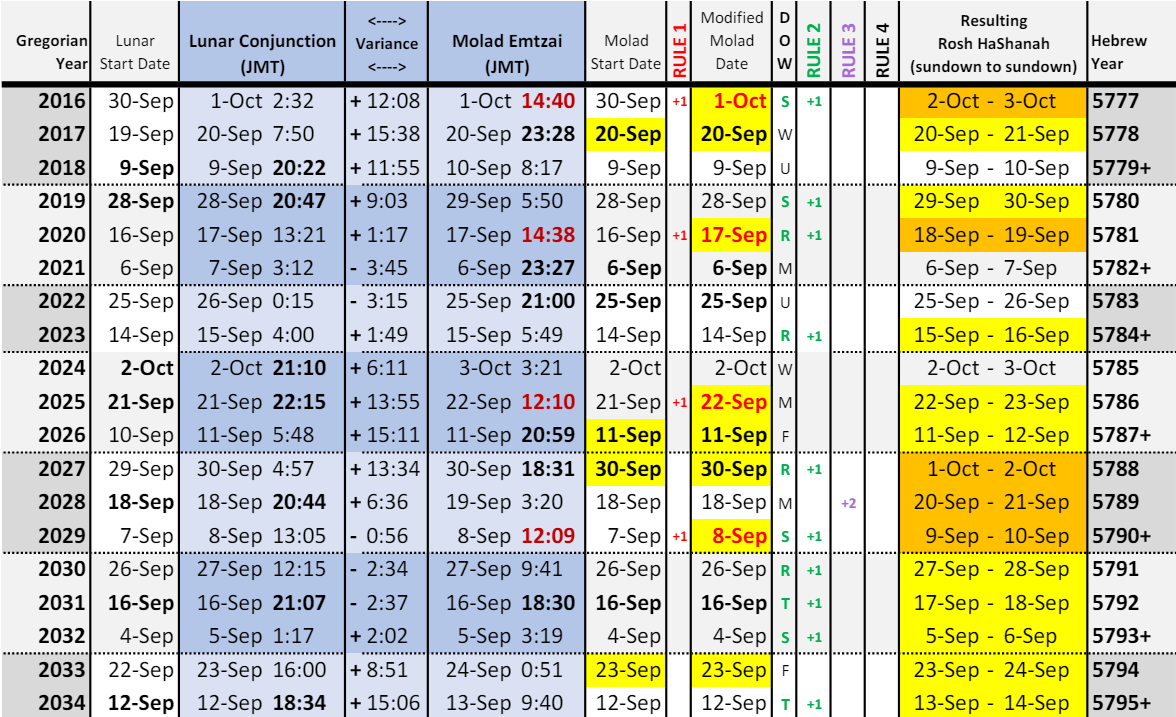
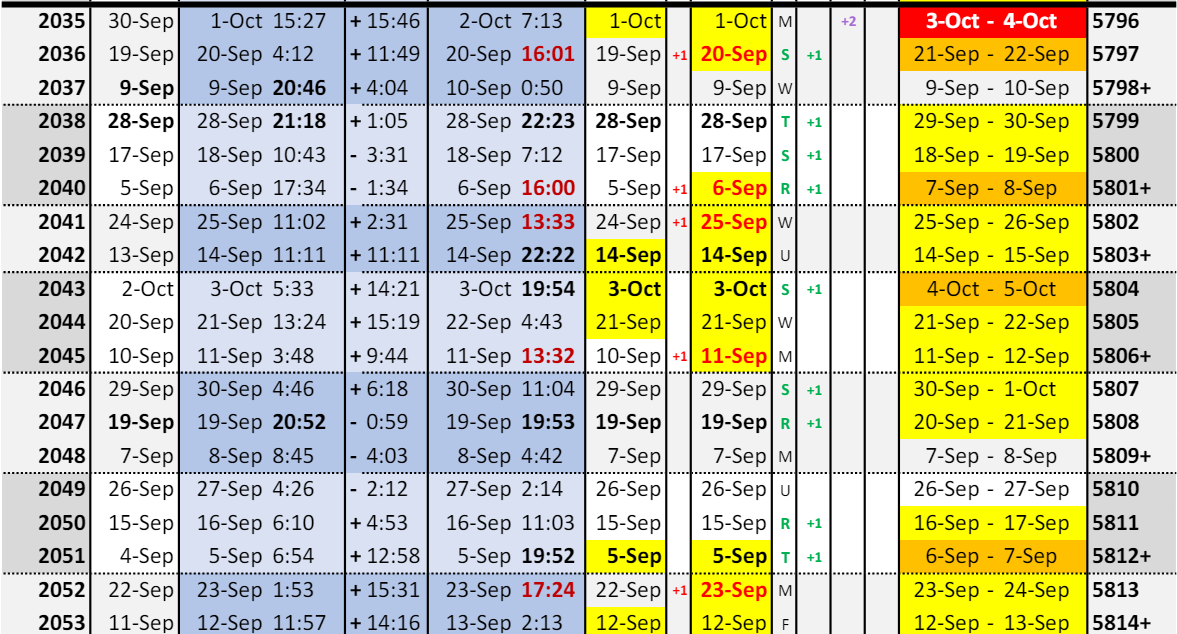
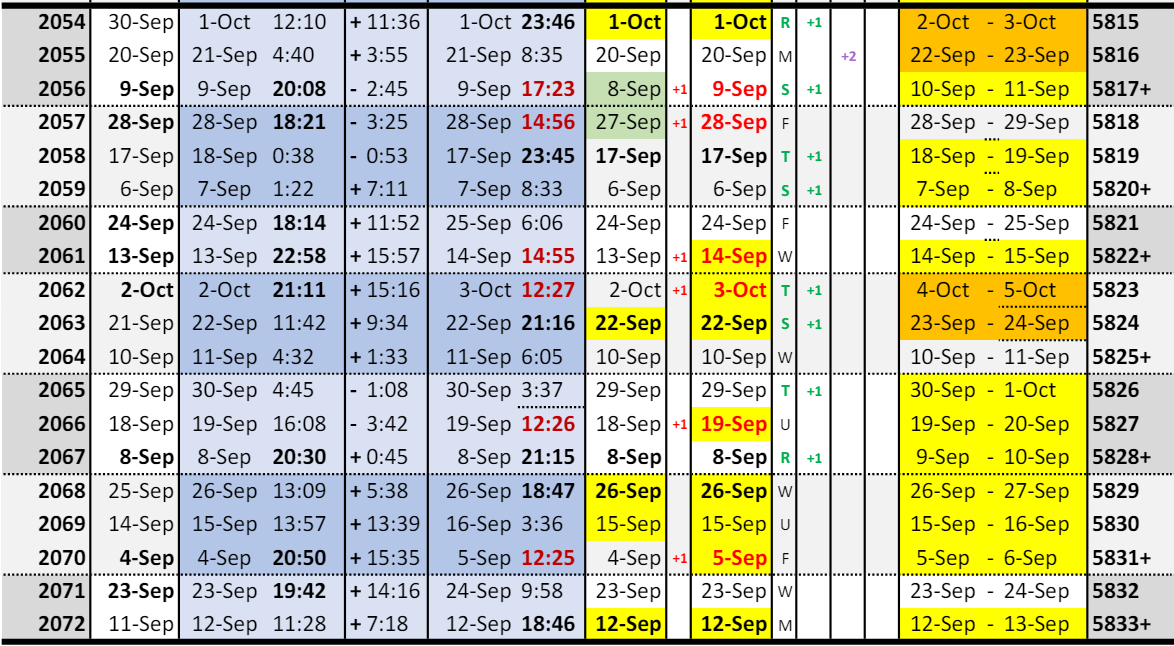
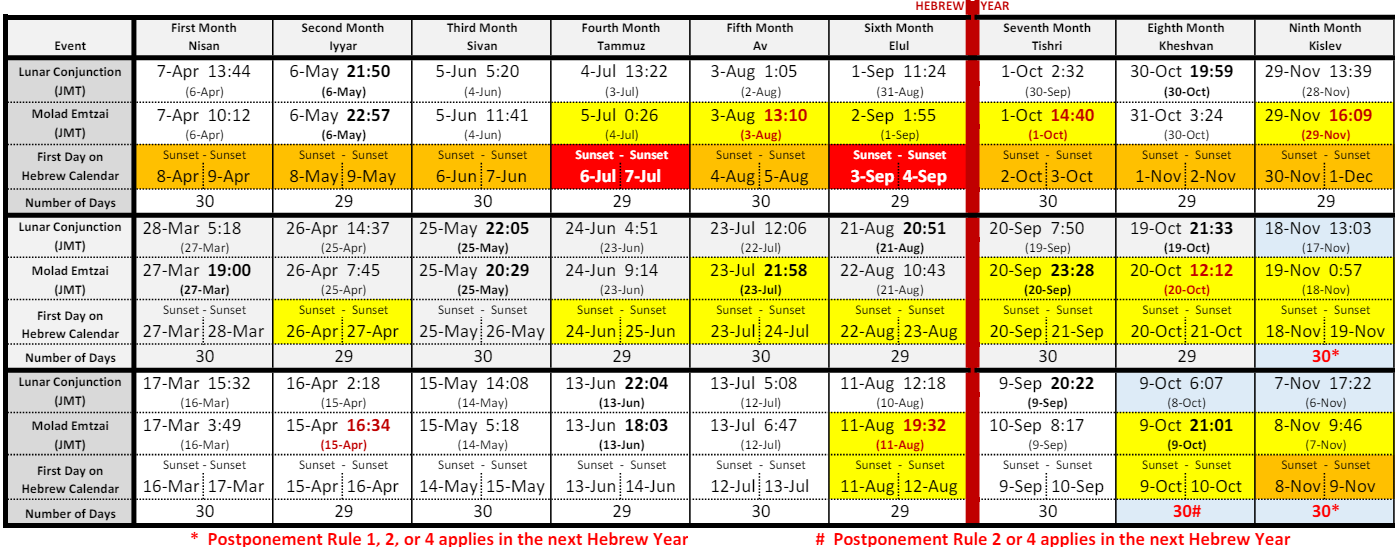
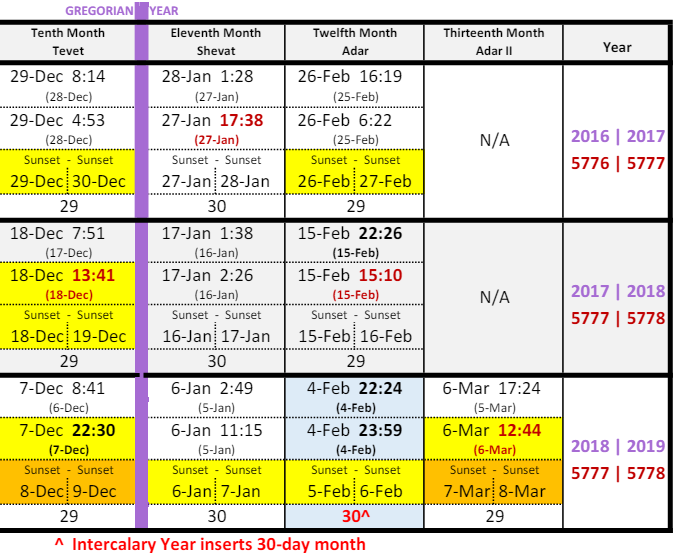
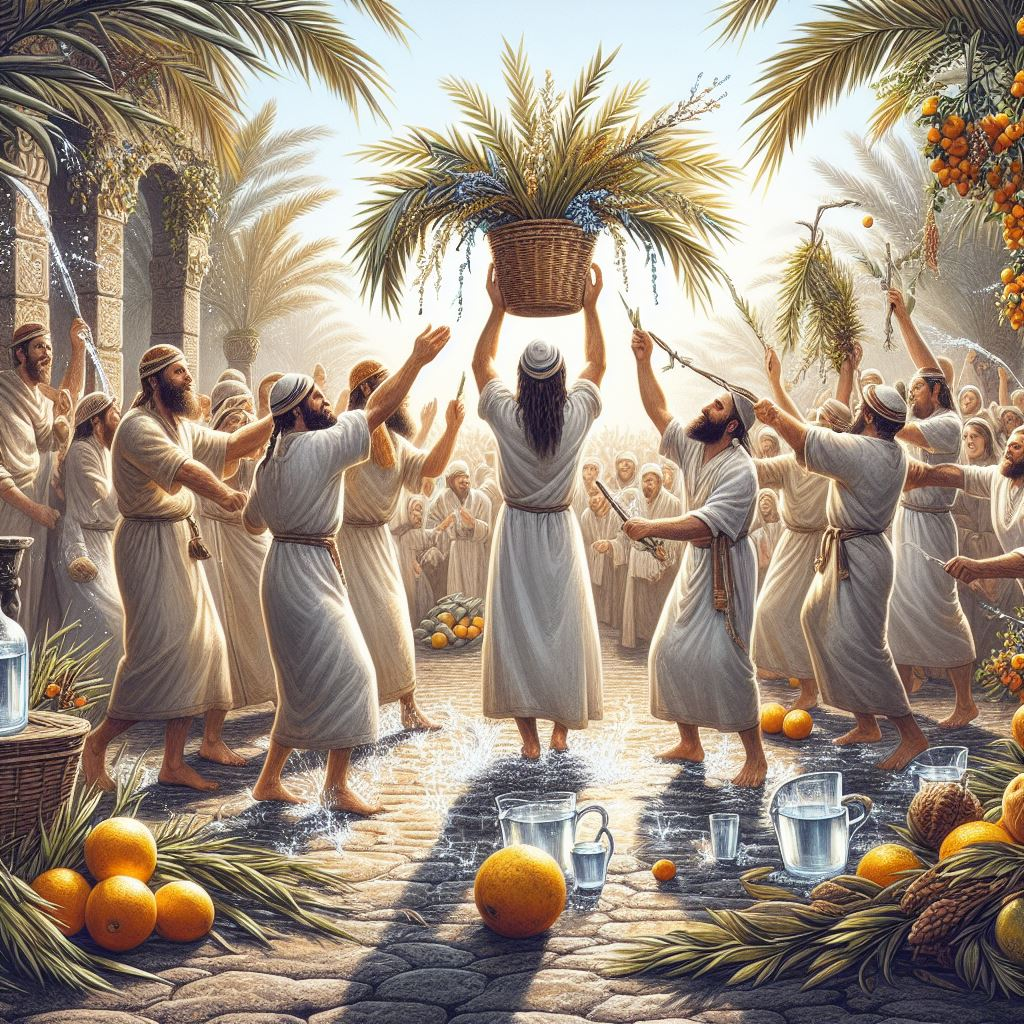
 Change is evident throughout the Hebrew Calendar. Regardless of whether someone argues that the Renewed Moon (chodesh) referred to in the Bible is the new moon crescent or the dark moon conjunction, you can see that the Hebrew calendar, by establishing fixed timetables, is not actually tied to the lunar cycle from month-to-month at all. Simply put, following the Hebrew calendar causes one to completely ignore Biblical instruction and adds their own interpretation of God's time. We need to question its validity and should! The rules and elements of this calendar absolutely do not exist within scripture.
Change is evident throughout the Hebrew Calendar. Regardless of whether someone argues that the Renewed Moon (chodesh) referred to in the Bible is the new moon crescent or the dark moon conjunction, you can see that the Hebrew calendar, by establishing fixed timetables, is not actually tied to the lunar cycle from month-to-month at all. Simply put, following the Hebrew calendar causes one to completely ignore Biblical instruction and adds their own interpretation of God's time. We need to question its validity and should! The rules and elements of this calendar absolutely do not exist within scripture.